Well folks, it is true, I believe in the Tomato.
In my quest over the past few months to find the tools and resources that work for me, I stumbled across the Pomodoro Technique. My love affair started when I was working on optimizing the HabitRPG workflow and installed the Chrome Extension. During the setup phase, there is a button to enforce Pomodoro sequences. Having no experience with it, I jumped on Wikipedia and learned as much as I could. As things progressed, I found myself using it more and more, and in need of a way to monitor my Pomodoro time while completing mobile tasks. A quick search on the app store found hundreds of Tomato timers, and I selected a few to try out.
In my opinion, Pomodoro Timer is the best app available for iOS and the Pomodoro Technique.
Review
So, before we get started, it is important to look at what the Pomodoro Technique is and how it relates to productivity. From my quick research, I found that the concept of Pomodoro is not very recent, but the hype surrounding it is. Using the system, you take the items and challenges in your day and break them down into small time specific “Pomodoros” or 25 minute intervals. After each “Pomodoro” you give yourself a minor break (3-5 minutes) and return for your next Tomato (by the way, Pomodoro means Tomato in Italian…). After four successful intervals, you reward yourself with a longer break (15-30 minutes).
Do you want to read more about the technique?
- This is a great article on LifeHacker about the Technique (as part of the 101 Series).
- This is the official website of the Pomodoro Technique.
- Wikipedia of course.
- My favorite desktop app to track my Pomodoro times.
This is an amazing article by Buffer that outlines why the Pomodoro Technique is a great feature for business productivity.
Now that you have a little background, lets jump into what this app has to offer and why I use it to track my Pomodoro times. When you first fire up the app, you are presented with a screen that looks like this (minus my current Pomodoro tasks):
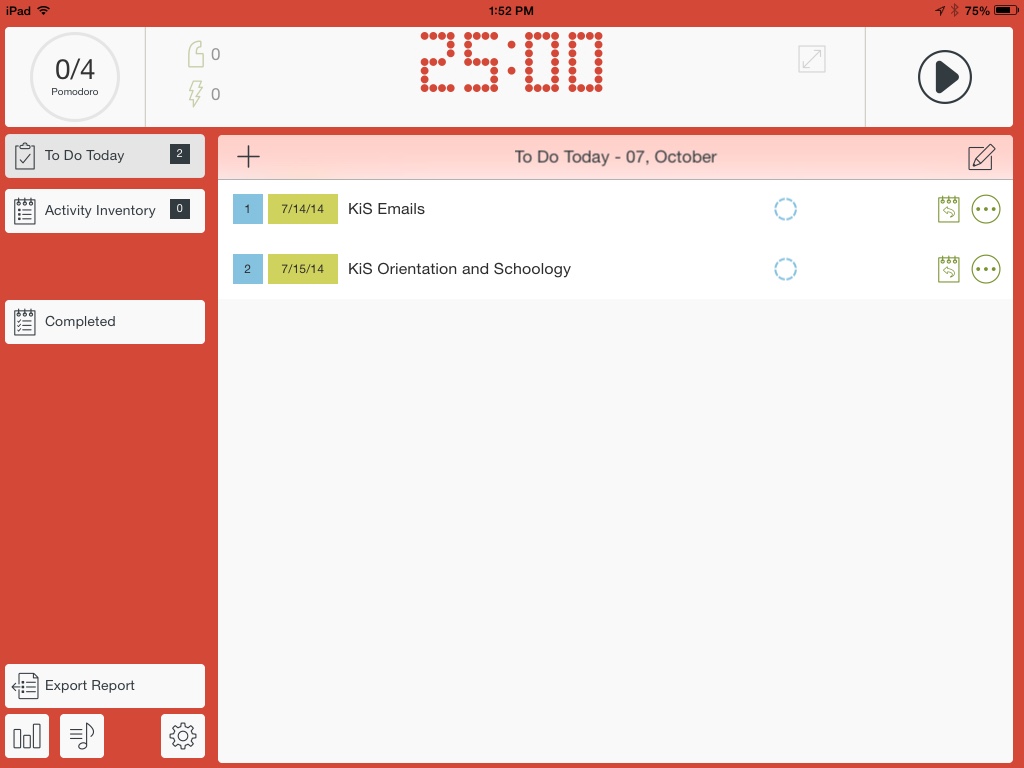
As you can see on the front page, there is a tremendous amount of functionality built into this little application. First, you can organize your Pomodoro tasks in either a full list or a simple “Today” view (great to mix with the GTD Method). You also have the ability to get great charts and exports of your task completion and statistics. For any task list that I use, the first thing I look for is how easy it is to add a new activity or task. A simple click of the + button launches the Activity popup and you can name your task and assign the number of Pomodoro’s required to complete it (max of four).
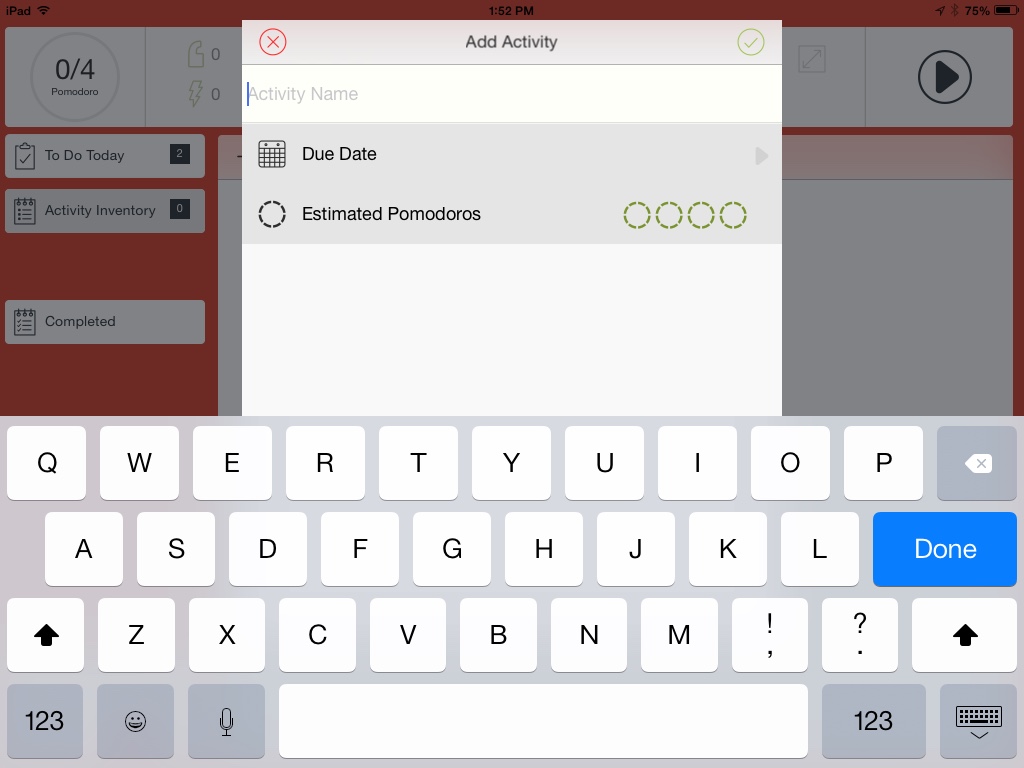
Once you have completed a couple of Pomodoro cycles, you can print a report of your time usage and statistics. These reports can be generated by the day or for the past week.
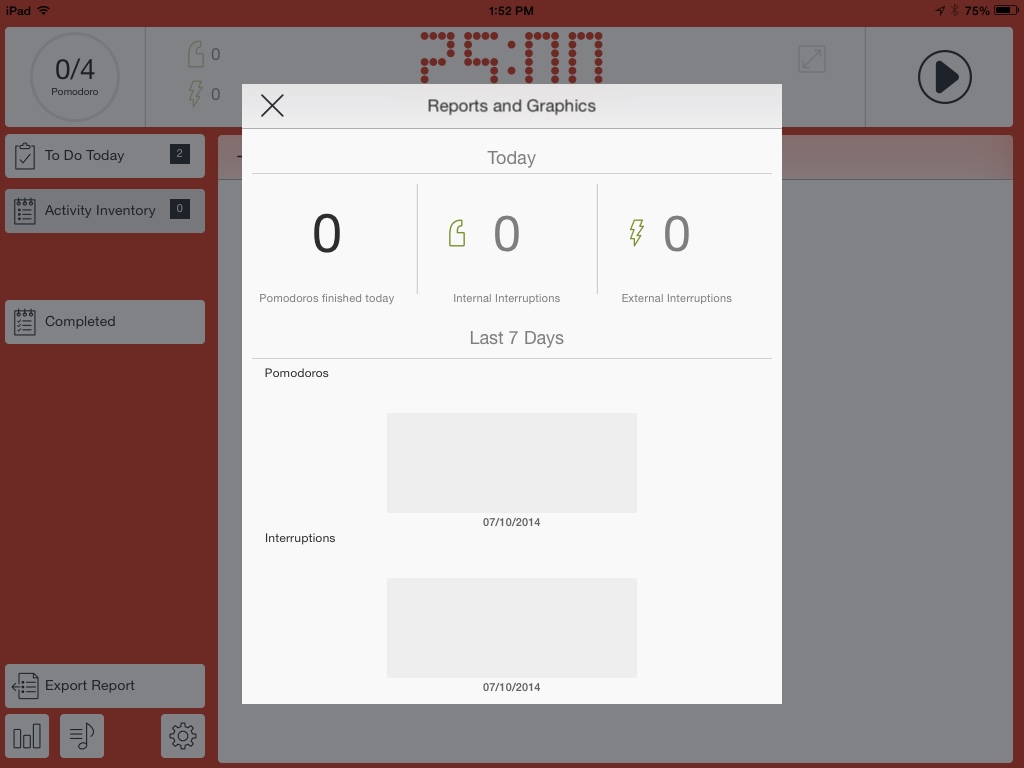
To top it all off, you can even play music during your intervals to help you guide into the work you are doing. There is a functionality to set recurring Pomodoro cycles (great for emails and meetings).
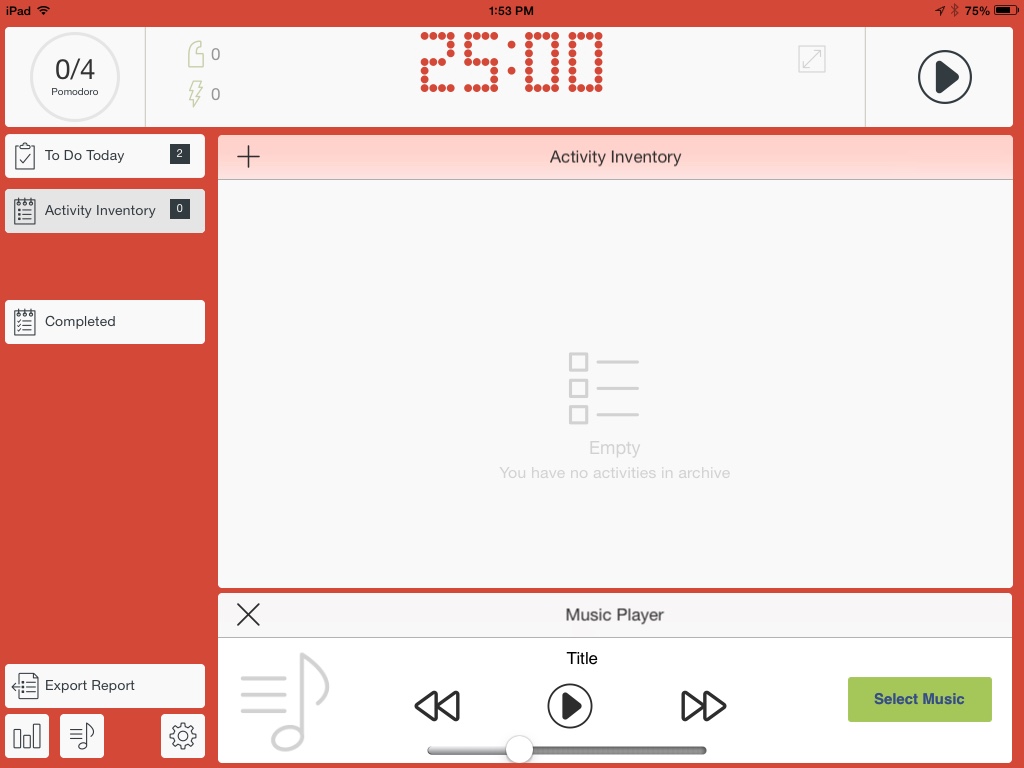
What takes the cake for me is that you can custom assign your own Pomodoro cycles. You do not have to stick with the 25-3×4 system, you can customize it however you like to fit your own productivity requirements.
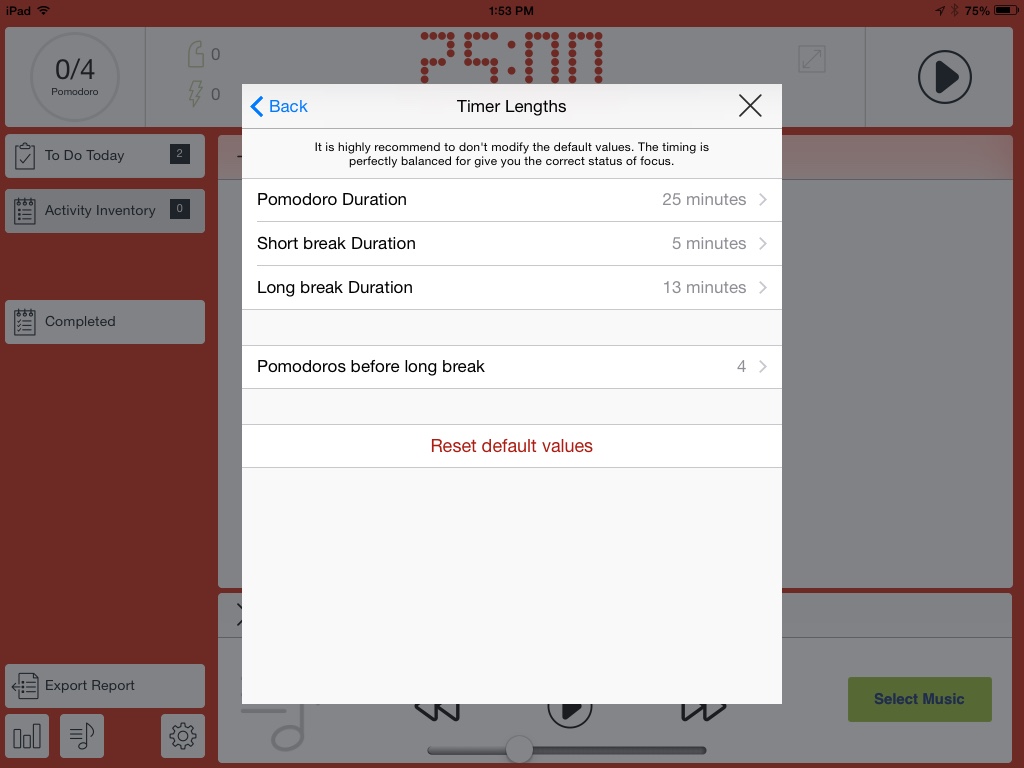
Overall
Pomodoro is another app in the Time Management and to-do list category. For a time, Pomodoro was a technique I used alot to make sure I completed my tasks. As my tasks changed, and I began to work on larger projects – beyond the 2hr Pomodoro time line – I lost track of the app, and the technique. Like all systems designed to help you be productive, it only works if you use it in a system that works for you. Unfortunately, the system did not work very well for me and fell out of my productivity cycle after a couple of weeks.
This is a great technique and I can see the effects of it in my current system. The app is a solid purchase if you are looking for something to help you manage the Pomodoro Technique from an iOS device.

